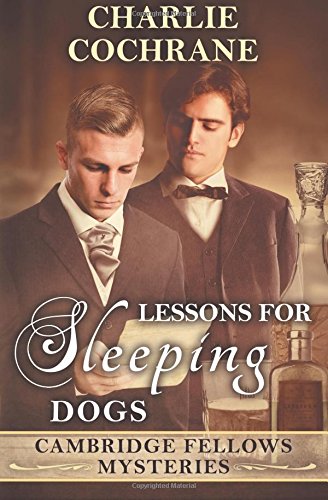Lessons for Sleeping Dogs
Lessons for Sleeping Dogs is the 12th in the Cambridge Fellows Mysteries series. The story features two Cambridge dons: Orlando Coppersmith and his partner, Jonty Stewart. Both are in their forties and veterans of the Great War. The setting is England in 1921.
The story revolves around the deaths of a physician and his paraplegic patient. Their bodies are discovered in the physician’s locked office. Both have ingested cyanide in what appears to be a case of euthanasia and remorseful suicide, but the patient’s sister is not satisfied with this explanation. She is convinced that her brother did not wish to die so enlists Jonty’s and Orlando’s aid in uncovering the truth.
Their investigation plods through interviews with family, housekeepers, secretaries, and groundskeepers. The only respite from the heavy dialogue is the romantic banter between the partners. In the end, the Cambridge fellows succeed in discovering the real truth – whose publication would serve no good. Thus, all agree to let “sleeping dogs lie.”
It wouldn’t be overly critical to say that some important elements in the story need work. The first is the writing style. Lacking any descriptions of places, period dress, or persona, the text reads like the script of a play. Second, the means of murder isn’t clever; it borders on silly. But perhaps the author intended a spoof – hard to say. Last, the blithe nonchalance of the main characters throughout belies the dangerousness of their relationship. Certainly in 1921 it would have been unthinkable that a family would, as they tell us, be supportive of their “arrangement” and that a housekeeper wouldn’t gossip. Suffice to remember Alan Turing’s fate some 30 years later.
Nonetheless, it is refreshing and important to see gay protagonists, and I, for one, am happy to have read a story in this genre.










